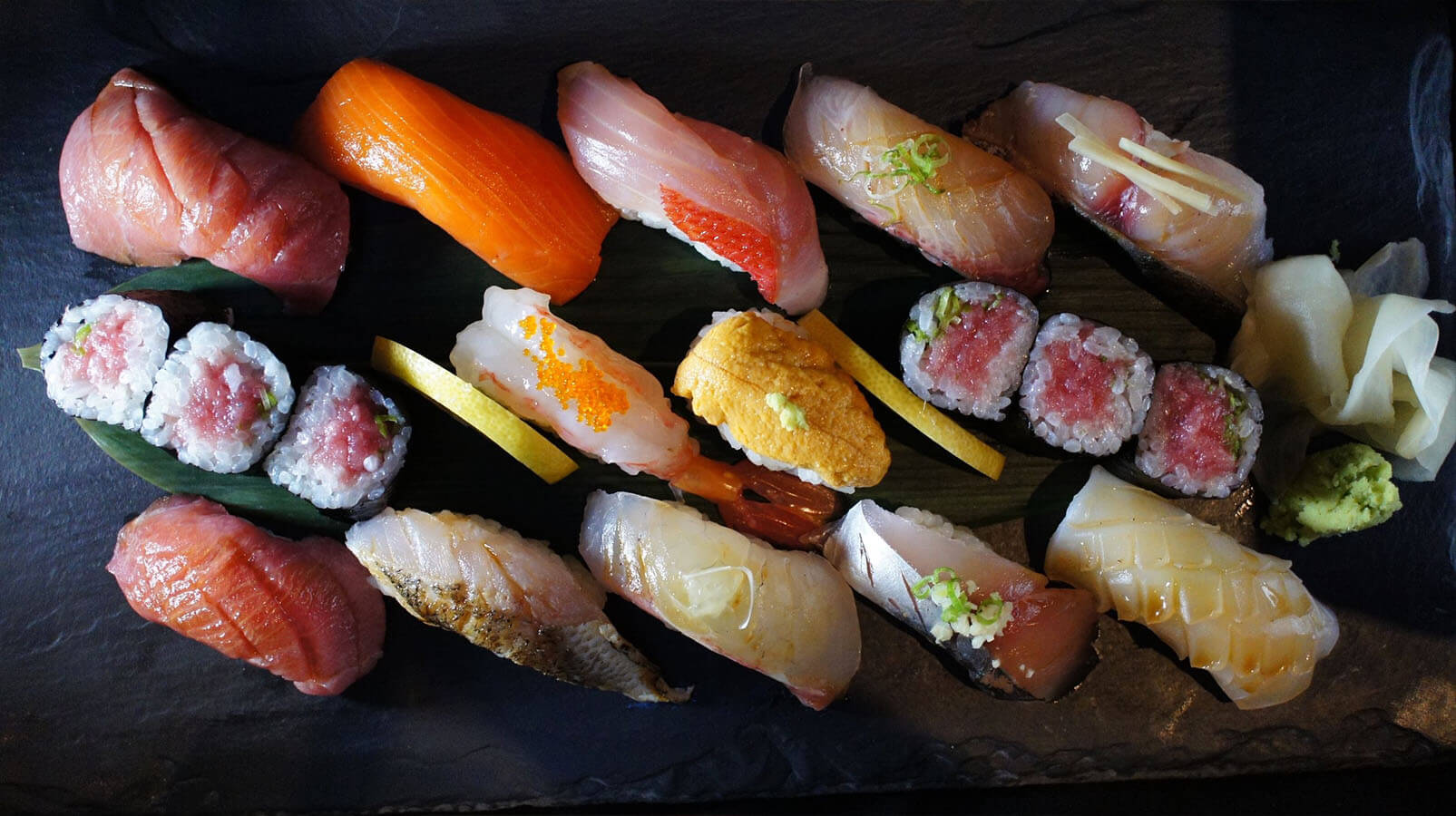
The history of 寿司(Sushi) began with paddy fields, where fish was fermented with rice vinegar, salt and rice, after which the rice was discarded. The dish is today known as narezushi, and was introduced to Japan around the Yayoi period. In the Muromachi period, people began to eat the rice as well as the fish. During the Edo period, vinegar rather than fermented rice began to be used. In pre-modern times and modern times, it has become a form of food strongly associated with Japanese culture.
Sushi is made of small pieces of raw fish that are wrapped in rice and seaweed. The seaweed, called nori, is collected with submerged bamboo nets. While some sushi is mass-produced using robots, the best sushi is made by hand. The sushi rolls are prepared by selecting certain types of fish that meet the highest standards for fat content, color and taste. The sushi chef chops off small bits of the fish and combines them with spices such as ginger root. Wasabi and soy sauce are commonly used to flavor sushi rolls. The chefs use a type of vinegar that is made from fermented rice to flavor the rice that is used to surround the fish and spices. Finally, the roll is wrapped up with some of the nori.
 Learn more on Wikipedia
Learn more on Wikipedia